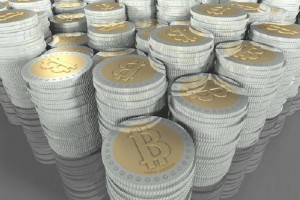Latest Posts
-
Finance 0
S&P Ends Week Little Changed After Fed Signals Rate Hike Possible In June
The major averages ended the week mixed, with the Nasdaq posting a gain, the Dow slipping and the S&P finishing not far from where it started after the minutes of the last Federal Reserve policy meeting showed the many in the central bank consider a rate hike next month as more likely to be the right course of action than many market participants may have anticipated. MACRO NEWS: On Wednesday, the Federal Reserve released the minutes from its last FOMC meeting, which showed that the members of the Fed’s rate setting committee saw “diminished” global economic risks and saw a June rate hike as “likely” if data ...On May 22, 2016 / By Kurt Osterberg -
Finance 0
The Line In The Sand
Another week of volatility, but with no real resolution to the burning question of “where do we go next?” This past week, the release of the FOMC meeting minutes from April did little to solve the overall confusion. On Friday,I noted some key highlights from the minutes: “Participants generally agreed that the risks to the economic outlook posed by global economic and financial developments had receded over the inter-meeting period. Participants also raised concerns about “unanticipated developments” associated with how China manages its exchange rate. Still, Fed officials signaled they weren’t overly worried about the appar...On May 22, 2016 / By Kurt Osterberg -
Finance 0
Searching For Dividends In The Retail Sector
The second quarter of 2016 is now more than half over, but we won’t receive the first reading on 2016:Q2 GDP from the BEA until the end of July. A forecast of something that is happening right now is sometimes described as a “nowcast”. The Federal Reserve Banks of New York and Atlanta are providing a valuable service by publishing continuously updated nowcasts of GDP. But what should we do if they’re giving us rather different numbers? Right now the Atlanta Fed’s nowcast is calling for second-quarter real GDP growth of 2.5% at an annual rate while the New York Fed says 1.7%. That’s actually a smaller disagreement than the two ...On May 22, 2016 / By Kurt Osterberg -
Finance 0
Forex Strength And Comparison: Week 21
For analyzing the best pairs to trade looking from a longer term perspective the last 3 months Currency Classification can be used in support: Strong: JPY, CAD, CHF. The preferred range is from 6 to 8. Average: USD, AUD, NZD. The preferred range is from 3 to 5. Weak: EUR, GBP. The preferred range is from 1 to 2. The charts were provided in the article: “Forex Currency Score Classification for Wk20”. ______________________________________ 13 Weeks Currency Score Strength for Week 21 / 22 May 2016 The 13 Weeks Currency Strength and the 13 Weeks Average are provided here below. This data and the “3 months currency classifi...On May 22, 2016 / By Kurt Osterberg -
Finance 0
US Bond Market Week In Review: The Fed Takes A Hawkish Tone
On Wednesday, the Fed released the minutes from their latest meeting. The commentary was generally upbeat. Participants viewed the labor market favorably, citing low unemployment, improving labor force participation and several anecdotal sources for support. And while overall PCE inflation was 1%, the core rate was approaching their 2% target. This combination led to this key conclusion: Most participants judged that if incoming data were consistent with economic growth picking up in the second quarter, labor market conditions continuing to strengthen, and inflation making progress toward the Committee’s 2 percent objective, then it li...On May 22, 2016 / By Kurt Osterberg -
Finance 0
Evolving Investment Climate
The US dollar’s weakness in recent months, despite negative interest rates in Europe and Japan likely had many contributing factors. These factors include shifting views of Fed policy, weaker US growth, the recovery in commodity prices, including oil, gold and iron ore, and market positioning. A new phase began in late-April/early May. The dramatic rally in iron prices reversed, and the Australian dollar, bottomed against the US dollar in mid-January, seemingly to anticipate the broader trend weakness.It peaked a week before the other major currencies, including the euro, yen, sterling and the Canadian dollar. The US dollar bottomed a...On May 22, 2016 / By Kurt Osterberg -
Finance 0
No One On Wall Street Has The Guts To Say This
Markets moved lower for the fourth straight week after the Fed kept open the possibility that it will raise rates again in June. My money is still on a single rate hike later in the year and not next month, but the 12-headed Hydra known as the Federal Open Market Committee (aka The Committee to Destroy the World) said just enough to keep markets worried last week, thus the Dow Jones Industrial Average (DIA) and S&P 500 are both up a mere 0.4% on the year. But, considering that these indexes are trading at nearly 20 times GAAP earnings, (and that GAAP earnings are complete bull because they are inflated by billions of dollars of bogu...On May 22, 2016 / By Kurt Osterberg -
Finance 0
Gold Bull-Phase I Continues To Confound (The Trek To “Known Values”)
Since January 20th the precious metal stocks have been in an upward impulse. I have classified this impulse as phase I of a new bull market. My essay “The three phases of a bull market” explains this in further detail. In short, phase I is the move off bear market lows to “known values”. Just prior to this move stocks were left on the bargain table and farsighted, wise investors picked them up from discouraged and distressed sellers. I have described this impulse move toward known values as analogous to a beach ball held under water then released. With the exception of Rambus, Spock and myself virtually all Precious Metals newsletter...On May 22, 2016 / By Kurt Osterberg -
Finance 0
Understanding Drivers Of Market Sentiment For The USD/CAD Pair
Will the USD Rebound Against the CAD?…. The USD/CAD currency pair is currently trading at 1.3111, down 0.03% for the day or C$0.0003. The pair started 2016 at C$1.3900 to the greenback, and it has clawed its way to C$1.2529 on 3 May. Since then, the greenback has reversed course and is looking increasingly bullish against the Canadian dollar a.k.a. the loonie. This North American currency pair is one of the major currency pairs, as a tremendous volume of trade takes place between the United States of America and Canada – far greater than the US and Mexico on the southern border. As a case in point, the total value of goods and services ...On May 22, 2016 / By Kurt Osterberg -
Finance 0
International Economic Week In Review: Three Central Banks Release Minutes
Last week, three central banks released meeting minutes.The ECB reported on a fairly positive internal environment, while, for the first time in recent memory, the RBA focused on inflation. The Fed strongly hinted at a June rate hike. The remainder of the news was mostly positive. For the first time in recent memory, Japanese economic news was positive.Industrial production increased a solid .7% M/M. And most importantly, 1Q GDP rose at a 1.7% annual pace (AR): Exports increased at an encouraging 2.4% annual rate while household consumption rose 1.9% (AR).Unfortunately, investment contracted 5.3% (AR). But as the following table shows, und...On May 22, 2016 / By Kurt Osterberg
Top Posts
-
 The Importance for Individuals to Use Sustainable Chemicals
The Importance for Individuals to Use Sustainable Chemicals
-
 Small Businesses: Finding the Right Candidate for the Job
Small Businesses: Finding the Right Candidate for the Job
-
 How to Write the Perfect Thank You Letter After Your Job Interview
How to Write the Perfect Thank You Letter After Your Job Interview
-
 3 Best Large-Cap Blend Mutual Funds For Enticing Returns
3 Best Large-Cap Blend Mutual Funds For Enticing Returns
-
 China suspected in massive breach of federal personnel data
China suspected in massive breach of federal personnel data













